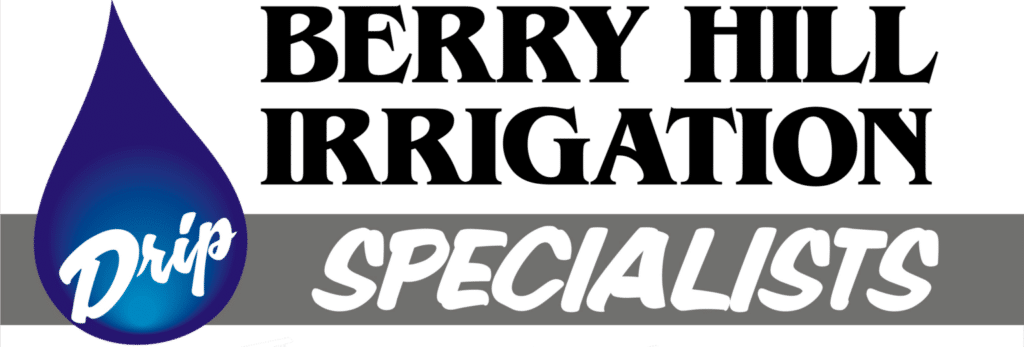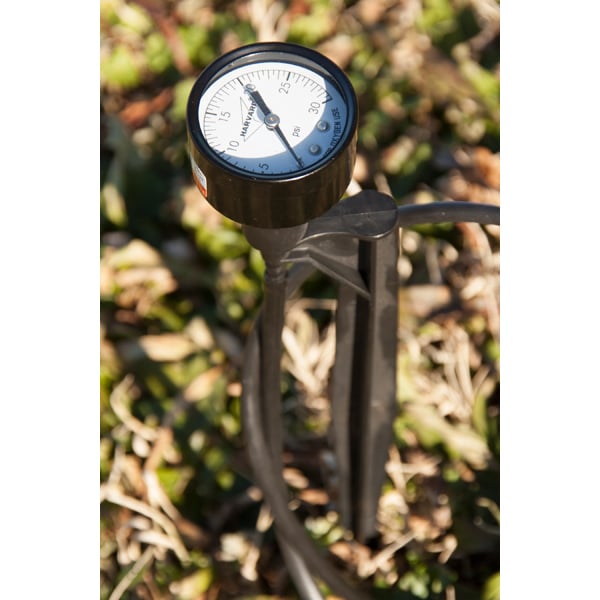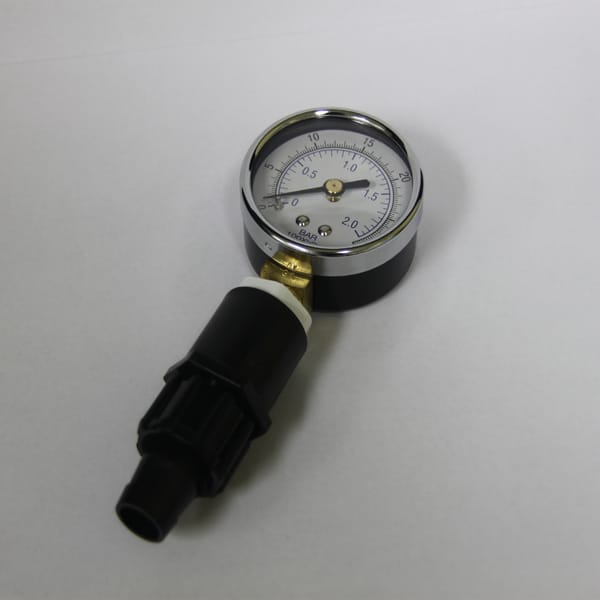Pressure Gauges and Anti-Siphon Valves
Pressure Gauges and anti-siphon valves are beneficial to an irrigation system for numerous reasons. Our PR-Tape and PR-Stakes can help you read pressure right at the field while irrigating.
Anti-Siphon valves in irrigation systems are important to protect the water source. Anti-siphon valves prevent contaminants from entering the main water supply from your fertilizer injector.
WHY USE A PRESSURE GAUGE ?
Drip Irrigation systems typically operate at 15 psi or below. You can install pressure gauges in header lines to read pressures to maximize uniformity throughout the zones. Pressure gauges also can be installed at the ends of drip lines to help maximize uniformity as well. Pressure gauges installed down stream of a pressure regulator will help you to know that the regulator is operating properly and that the water supply is capable of meeting the zones water requirement demand.
HOW TO USE A PRESSURE GAUGE?
Pressure gauges can be installed on both the inlet and outlet side of a filtration system. This will allow you to know when it is time to clean the filter and not have a flow rate restriction because of a clogged filter.
Types of Gauges
- Liquid Pressure Gauges
- Dry Pressure Gauges
- Different pressures, 0-15 psi, 0-30 psi, 0-100 psi, etc
- Bottom threads or Back threads
Why use an Anti-Siphon?
- When irrigation systems are shut down water can flow backward to the source and cause contamination.
- Anti-siphon valves prevent water from being siphoned back into the supply line.
- When nutrients and chemicals are injected through irrigation systems the use of anti-siphon valves prevent and contamination to the source so it can continue to be used for other uses.
- Anti-siphon valves keep irrigation lines full of water at all times so when the zone is turned on the system instantly becomes
operational and no time is wasted waiting for the system to refill.
Results
Pressure Gauges and anti-siphon valves are beneficial to an irrigation system for numerous reasons. Our PR-Tape and PR-Stakes can help you read pressure right at the field while irrigating.
Anti-Siphon valves in irrigation systems are important to protect the water source. Anti-siphon valves prevent contaminants from entering the main water supply from your fertilizer injector.
WHY USE A PRESSURE GAUGE ?
Drip Irrigation systems typically operate at 15 psi or below. You can install pressure gauges in header lines to read pressures to maximize uniformity throughout the zones. Pressure gauges also can be installed at the ends of drip lines to help maximize uniformity as well. Pressure gauges installed down stream of a pressure regulator will help you to know that the regulator is operating properly and that the water supply is capable of meeting the zones water requirement demand.
HOW TO USE A PRESSURE GAUGE?
Pressure gauges can be installed on both the inlet and outlet side of a filtration system. This will allow you to know when it is time to clean the filter and not have a flow rate restriction because of a clogged filter.
Types of Gauges
- Liquid Pressure Gauges
- Dry Pressure Gauges
- Different pressures, 0-15 psi, 0-30 psi, 0-100 psi, etc
- Bottom threads or Back threads
Why use an Anti-Siphon?
- When irrigation systems are shut down water can flow backward to the source and cause contamination.
- Anti-siphon valves prevent water from being siphoned back into the supply line.
- When nutrients and chemicals are injected through irrigation systems the use of anti-siphon valves prevent and contamination to the source so it can continue to be used for other uses.
- Anti-siphon valves keep irrigation lines full of water at all times so when the zone is turned on the system instantly becomes
operational and no time is wasted waiting for the system to refill.

$4.25 – $12.00




